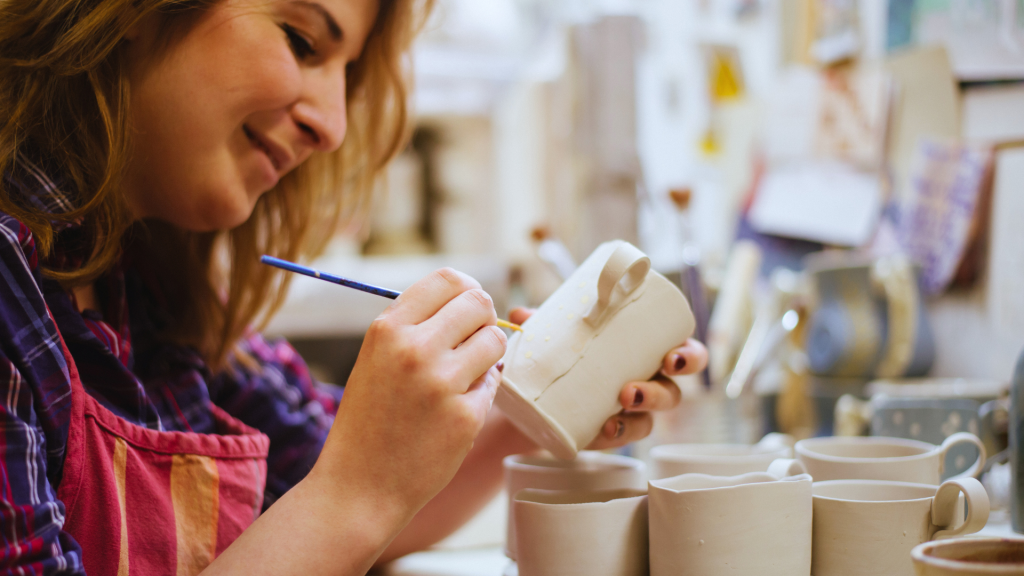Art serves as a powerful medium for self-discovery, allowing individuals to explore their thoughts, emotions, and identities. Through various forms of expression—be it painting, writing, or music—people can tap into their imagination, revealing hidden aspects of their selves. Engaging with art fosters self-awareness, leading to a deeper understanding of one’s identity and place in the world.
By creating or interpreting art, individuals may uncover feelings they weren’t consciously aware of, facilitating an important journey toward introspection. The process encourages contemplation and can spark meaningful conversations about self-identity and personal values. This exploration not only promotes personal growth but also aids in understanding one’s purpose and aspirations.
In a world often dominated by external influences, art offers a sanctuary for genuine expression. It empowers individuals to break free from societal expectations and connect with their authentic selves. Through this connection, art becomes a vital tool in the ongoing quest for self-discovery.
Exploring Self-Discovery Through Art
Art serves as a powerful avenue for personal growth and self-exploration. By engaging with various artistic mediums, individuals can confront psychological challenges and deepen their understanding of self.
Art as a Catalyst for Personal Growth
Engaging with art encourages individuals to articulate their feelings and thoughts. This process can lead to significant personal growth as participants confront emotions often left unexamined.
Through mediums like painting, sculpture, and writing, individuals can express complex thoughts. This expression aids in clarifying their identities and life experiences.
Artistic endeavors foster a safe environment for exploration. By experimenting with different styles and techniques, individuals can uncover hidden aspects of themselves, paving the way for deeper insights and connections.
Self-Exploration and Art Therapy
Art therapy specifically integrates artistic processes with therapeutic goals. It serves as a structured approach to self-exploration, often facilitated by a trained therapist.
In sessions, participants may create visual representations of their thoughts and feelings, providing a non-verbal outlet for communication. This can be particularly beneficial for those facing psychological challenges.
Through guided exercises, individuals explore their emotions and experiences creatively. The therapeutic process allows participants to understand their inner worlds better, contributing to emotional healing and personal insight.
Art therapy can be transformative, allowing individuals to work through trauma and encourage resilience. The act of creating art helps connect thoughts and feelings, promoting a deeper level of self-awareness.
The Healing Powers of Creating Art
Engaging in artistic creation offers significant benefits for emotional healing and serves as a powerful medium for self-expression. Through art, individuals can explore their emotions and develop effective coping strategies.
Art and Emotional Healing
Creating art can be a therapeutic experience. It allows individuals to process complex emotions and experiences that might be difficult to articulate. Engaging in activities such as painting, drawing, or sculpting can provide a sense of relief and clarity.
Art acts as a vehicle for self-reflection, enabling people to confront their feelings without fear of judgment. This creative process fosters a sense of agency, promoting mental well-being. By channeling emotions into tangible forms, they may find a newfound understanding of their mental state.
Catharsis and Expression Through Art
Artistic expression is often a cathartic release for many. It can transform pain and frustration into something beautiful, providing a sense of accomplishment. This sense of achievement can enhance self-esteem and encourage further exploration of one’s feelings.
Creating art serves as a coping strategy during challenging times. It allows for the exploration of personal narratives, helping individuals make sense of their experiences. By externalizing emotions through various mediums, they cultivate resilience and foster a deeper connection to their inner selves.
Artistic Activities for Self-Reflection
Artistic activities provide opportunities for self-reflection and can enhance creativity and focus. Engaging in various forms of art allows individuals to explore their emotions and thoughts in a constructive way.
Engaging in Art Therapy Activities
Art therapy activities can facilitate meaningful self-reflection. These structured sessions often involve creating visual art as a means of expression. Participants use various mediums, such as clay, pastels, or paint, to explore their feelings.
Common activities include:
- Collage Making: Selecting images, words, and materials to create a visual piece that represents the self.
- Journaling with Art: Combining written reflections with drawings to deepen understanding of personal experiences.
These activities encourage a safe space for expressing emotions. By focusing on the creative process rather than the final product, individuals gain insights into their inner selves.
Developing Creativity and Focus via Drawing and Painting
Drawing and painting are powerful tools for self-discovery. These activities require concentration, allowing individuals to connect with their thoughts and feelings. Engaging in such practices can improve mindfulness and enhance emotional regulation.
Popular activities include:
- Sketching: Capturing spontaneous ideas or emotions on paper.
- Abstract Painting: Expressing feelings without the constraints of realistic representation.
These methods help individuals articulate their inner experiences. Focused creative expression can reveal hidden thoughts and foster a deeper sense of identity and self-awareness.
Enhancing Life Satisfaction through Art-Making
Art-making provides individuals with tools for joy and relaxation while also fostering self-esteem and compassion. Engaging in creative processes can lead to meaningful experiences that enhance overall life satisfaction.
Art as a Means to Joy and Relaxation
Creating art serves as a direct path to joy. Individuals often experience a sense of happiness when they engage in creative activities. For instance, painting, drawing, or sculpting allows for emotional expression.
This process can lead to relaxation, reducing stress and anxiety. While creating, the mind can focus solely on the work at hand, offering a break from everyday worries. The act of making something can inspire feelings of accomplishment, further contributing to overall happiness.
Fostering Self-Esteem and Compassion
Art-making can significantly boost self-esteem. As individuals express their true selves through creativity, they often discover and embrace their unique qualities. This exploration cultivates a sense of personal growth and acceptance.
Moreover, creating art can foster compassion, both for oneself and others. When individuals reflect on their experiences through art, they develop empathy. Understanding one’s emotions and experiences can help build deeper connections and appreciation for others’ journeys, enhancing emotional well-being.

